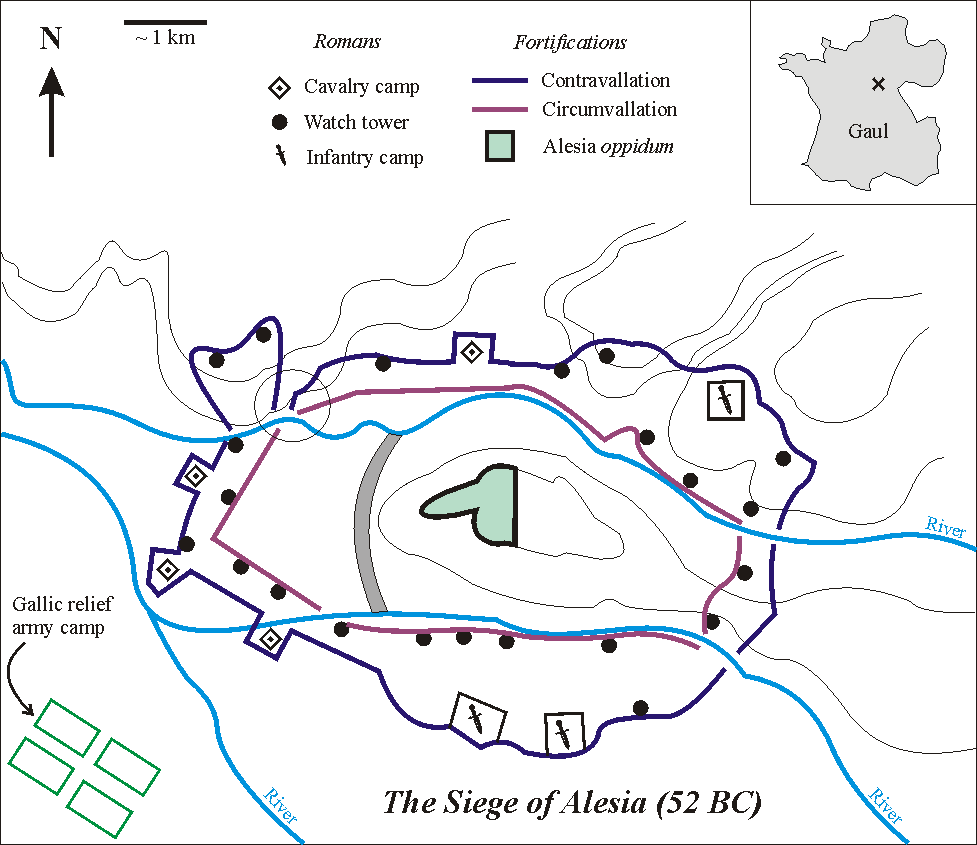Julius Caesar was in full-blown superstar mode in Rome.
It was 58 B.C and he was the kid who couldn’t lose. Caesar had just been appointed proconsul (governor) of three Roman provinces, an office usually held for one year that he would hold on to for nearly five. Oh, and he was the head of four full legions of Roman soldiers.
But Caesar was vexed.
In what is now modern day France, the Gallic tribes were giving Rome some serious headaches: invading here, pillaging there, just being overall buzzkills.
So Caesar decided he was going to do two things at once: expand the Roman Empire and squash this Gallic beef and bring peace to the region.

Things started out incredibly well for Caesar with victories over various tribes of Gauls, and even defending a few of these tribes from invading Germanic tribes.
There was no rest to be had for Julius.
But before things got better, they got much, much worse. For the first time in six years, Julius Caesar suffered his first clear cut defeat.
The Legio XIV, a legion led by Quintus Titurius Sabinus, was destroyed in a carefully planned ambush and it caused outrage amongst the Romans. After all, how could these barbarians muster any type of challenge compared to the mighty Roman armies?
To make matters worse, the Gauls began to unite their divided tribes and one by one began to rebel against Rome and against Caesar. They destroy many of his supplies and cut him off from reinforcements. Caesar was in deep trouble, but he wasn’t out of the fight yet.
After a series of battles the bend-but-don’t-break legions under the command of Caesar managed to push the united Gallic warriors, and their leader Vercingetorix, to regroup at a small fortified settlement called Alesia.
There, Vercingetorix thought he clearly had the advantage. He had 80,000 men garrisoned in this small settlement, and outnumbered Caesar’s troops nearly 4-to-1. But he underestimated how much of a military genius Caesar truly was.
Caesar decided he would lay siege to the settlement and ordered his troops to build a siege wall around the entire settlement area.
He then learned an army of 200,000 Gauls were headed his way to completely destroy his army. When that army arrived, he and his troops would be totally surrounded by nearly 300,000 enemies. He needed a plan, and he needed it fast.
What did he come up with? His plan was as crazy as it was innovative and daring: he decided to build a second wall around the settlement. While the first wall faced inward to maintain the siege, this second wall would face outward protecting his troops from attack. Oh, and did we mention that his army built both in less than a month?

So for clarity: Caesar had laid siege to an army bigger than his, and then was about to be attacked by an army even bigger than that one. Nice.
When the fighting started, Roman troops found themselves fighting in both directions, battling over rows and rows of the dead. Caesar himself led an advancement of reserve troops who attacked at a critical moment and helped win the day for the legions, who at the start of the battle were outnumbered nearly 6-to-1.
The defeat of the army on the outside of the wall forced the surrender of the troops and its leadership inside the wall.
The victory secured peace in the region and sent Caesar’s reputation into the stratosphere.
As for Vercingetorix, he spent the next six years in prison in Rome before being executed, most likely by strangulation, which was the Roman custom at the time.
Bummer.



If you liked this, you’ll love the story of the fist fight that stopped the Civil War.

